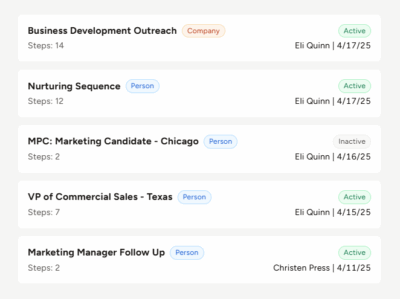When it comes to hiring practices, it’s important to change up your approach to adapt to recruiting trends. One popular strategy many hiring managers use is requiring candidates to take a job-fit test.
The job-fit test can improve company satisfaction with new hires by 77%, according to one study. However, depending solely on the job-fit assessment is not beneficial. For successful hiring, you need to incorporate the job-fit test into other recruitment strategies, like screening and interviewing.
Find out what the job-fit test is, how it could help your client make a good hire, and how to add it to your recruitment process.
What is the job-fit test?
The job-fit test is pre-employment testing that determines whether a candidate would fit in well with the company.
A job-fit test helps hiring managers learn about a candidate’s personality, interest in the job, values, and job expectations through a series of standardized questions. The test usually ranges from 30 minutes to one hour, but it can take more or less time depending on the number of questions.
Also called a personality test, the job-fit test looks at characteristics of each candidate to see if they would mesh well with the company culture. The personality test for job-fit is one component of standardized testing you could require.
Depending on the job, you or your client might also administer other types of job-fit tests, like physical ability, drug, and talent assessment tests.
How does it work?
With a personality test for job-fit, candidates will respond (typically) with an answer ranging from Strongly Agree to Strongly Disagree. Each one will have a number rating. Take a look:
- Strongly Agree (5)
- Agree (4)
- Neutral/Undecided (3)
- Disagree (2)
- Strongly Disagree (1)
Encourage candidates to think carefully and answer the questions honestly.
Job-fit test examples
You can find job-fit tests on the internet. There are countless questions you could ask candidates. Here are some job-fit test example questions to give you an idea:
- I prefer a fast-paced work environment
- I am more detail-oriented than big picture
- I enjoy working with others rather than working by myself
- If there is conflict in the workplace, I get closed off
- I consider myself a people-person
- I am aware when others are upset
- I don’t let my personal life affect my work life
- If a co-worker is doing something wrong, I will take action
- Sometimes, I would rather be right than honest
- I am uncomfortable with public speaking
Benefits of the job-fit assessment
Using the job-fit test can increase your recruiting placement success. The job-fit test can help you really get to know more about each candidate. Through a series of questions, you can find out if their answers match the qualities needed for the open job.
You won’t have a clear idea of what a candidate will be like on the job unless you ask the right questions. With a job-fit test, you can get more insight into how they will behave and handle certain situations.
After receiving the job-fit test results, you can offer feedback to candidates and talk to them about their answers in more detail. This lets the candidate get on the same page with what your client expects. And, it helps foster a relationship between you and the candidate.
Job-fit tests are an easy way to weed out candidates who would be a bad fit for the job. If you decide to create a personality test for job-fit, you can use a standard template. Then, you can add and remove questions for each job order your receive.
If you’re using recruiting software, you can track where candidates are in the talent pipeline. That way, you know who is still in consideration after administering the job-fit test.
Adding the job-fit assessment test to the hiring process
Different companies choose to give the job-fit assessment at various parts in the hiring process. Some companies require interested applicants to fill out the job-fit assessment before they apply for the job. Others wait until after the last round of interviews. When you administer the job-fit test is your decision.
In some cases, a company only depends on the job-fit test in the hiring process. Using the job-fit test as a replacement for thorough screening and interviews is not a wise idea. To get a full picture of a candidate, you need to meet with them and talk in person.
Depending only on the job-fit test can cause a bad hire to creep in. Incorporate it into your recruitment process, but don’t forget about the other necessary steps you need to follow for a successful placement.
Here’s a sample of how you can incorporate the job-fit assessment test into your recruiting process after sourcing candidates:
- Screen candidates
- Conduct telephone interviews
- Invite candidates to in-person interviews
- Administer a job-fit test
- Carry out other pre-employment tests
- Extend the job offer
When you incorporate the job-fit test into your hiring process, you can assess the candidate’s answers, as well as your notes from the interviews.
By using all this information, you and your client can get a well-rounded view of each candidate. That way, your client will be confident that their new hire is a good fit for the job.








